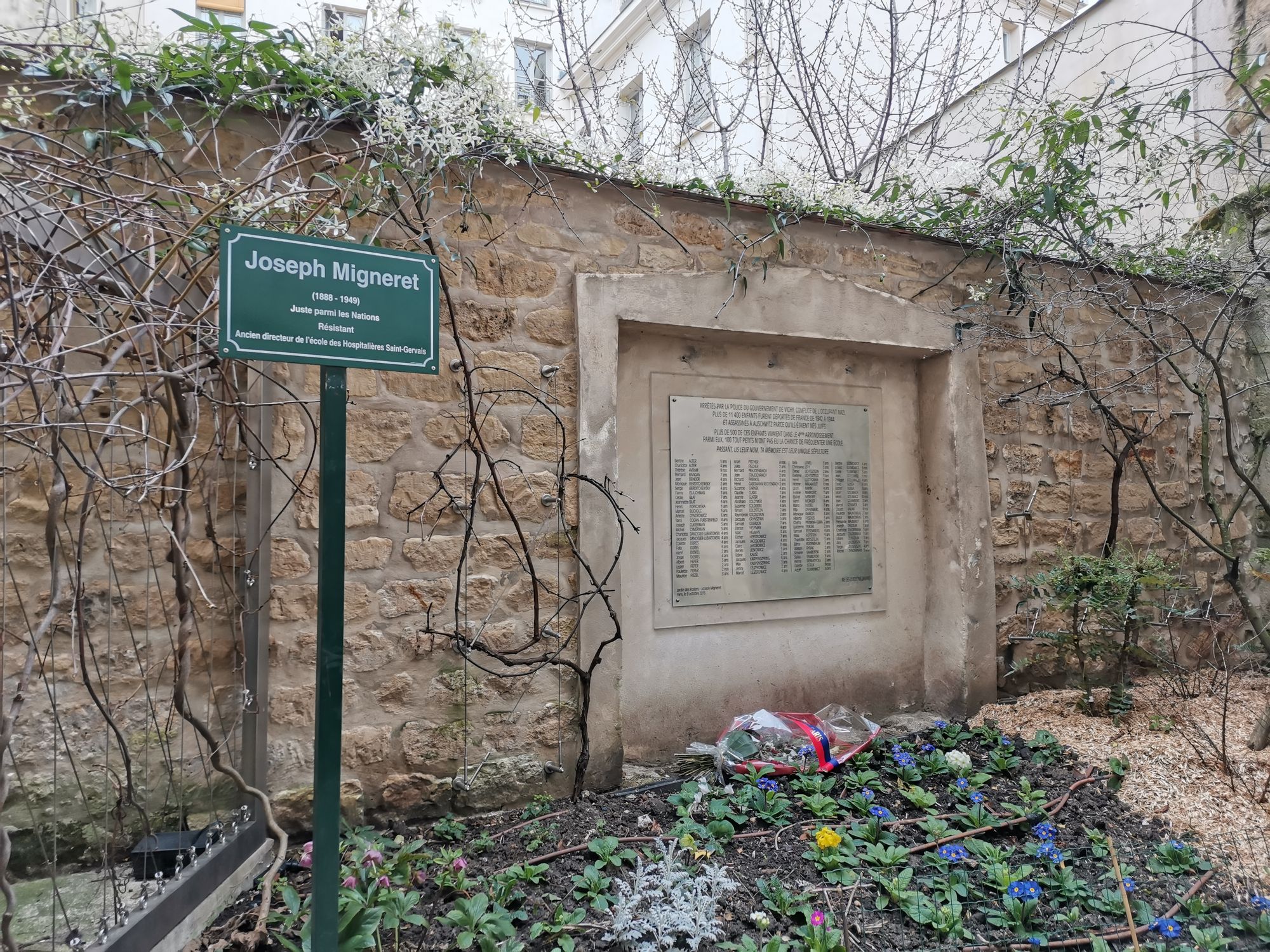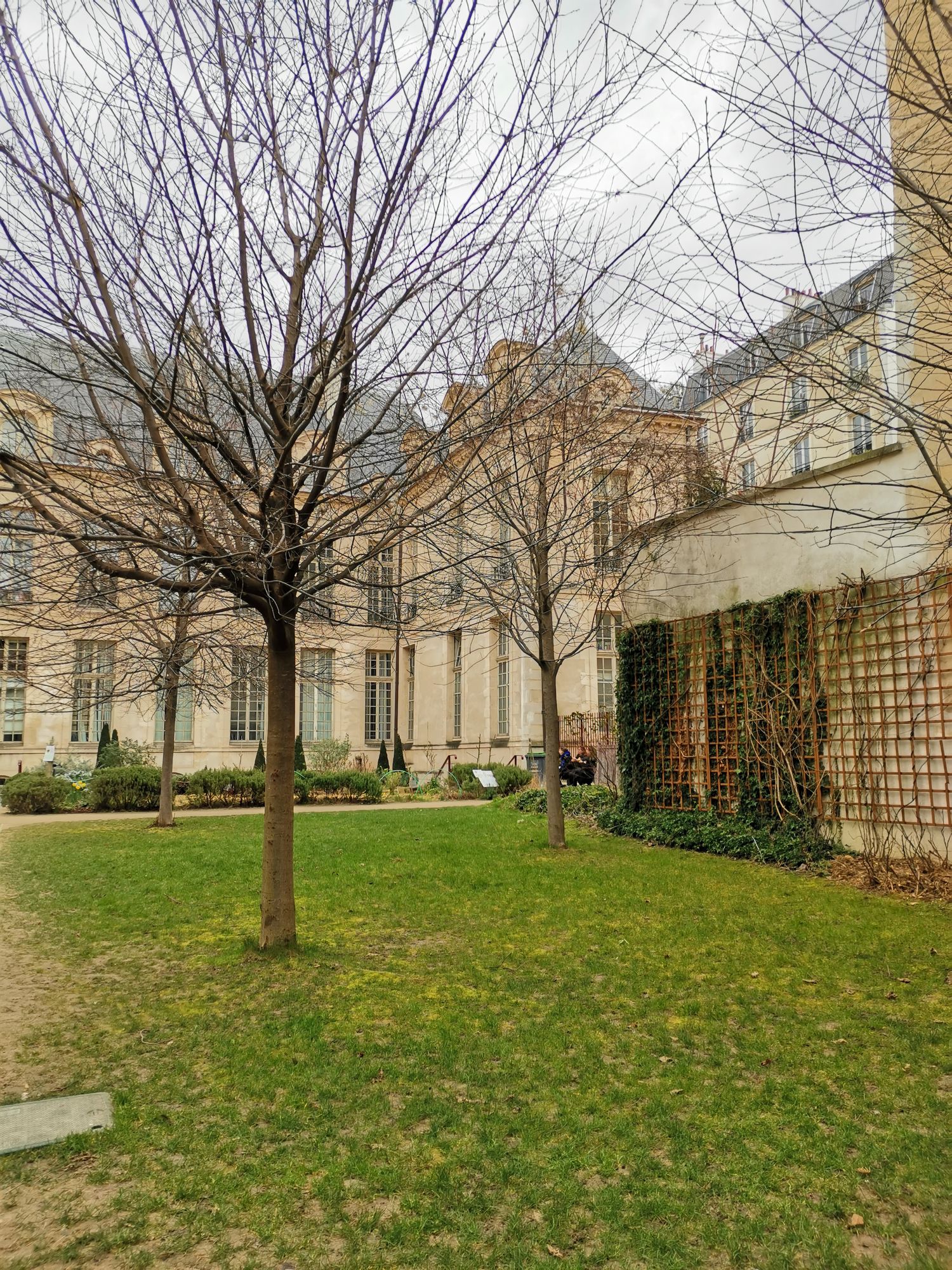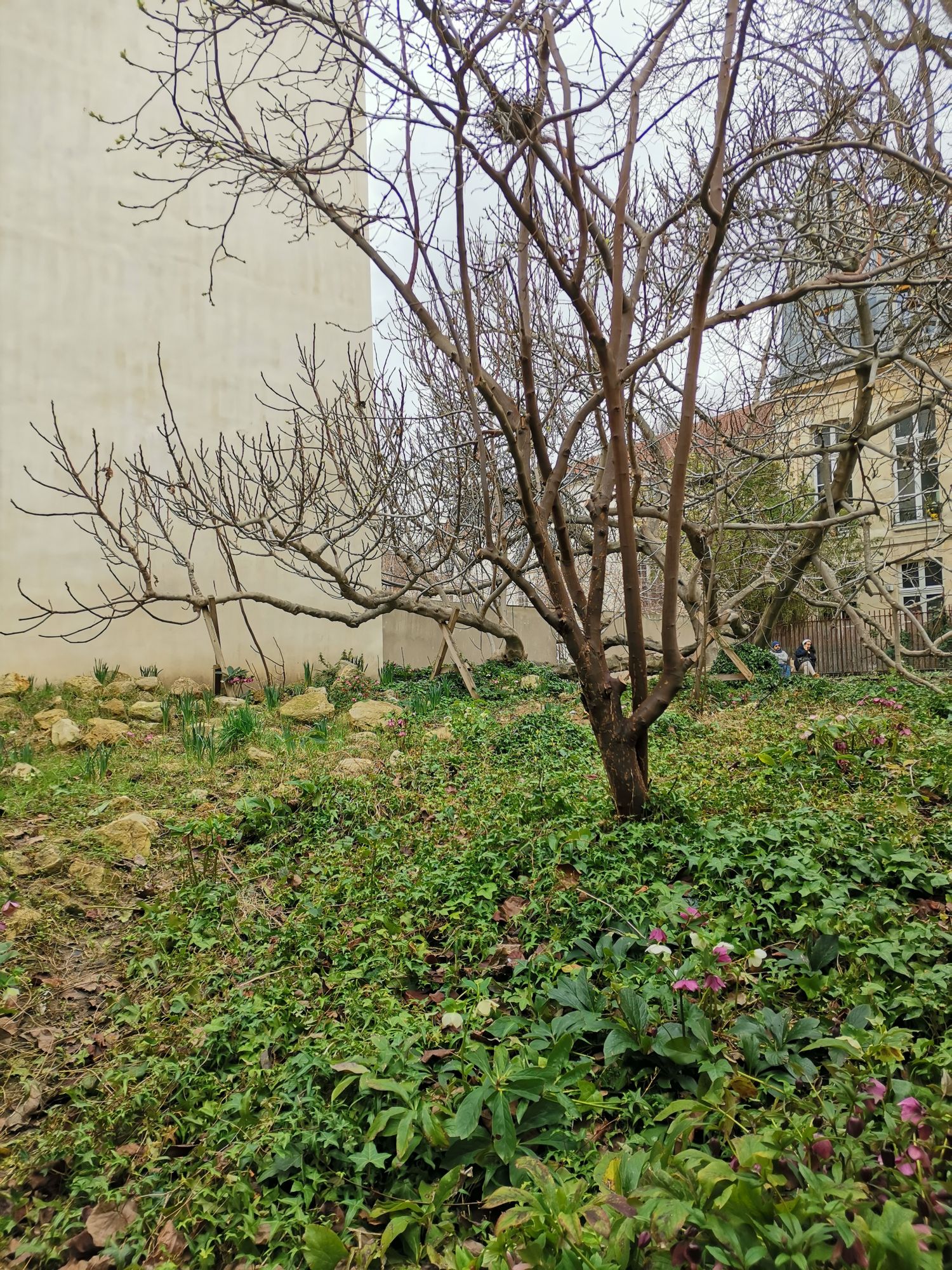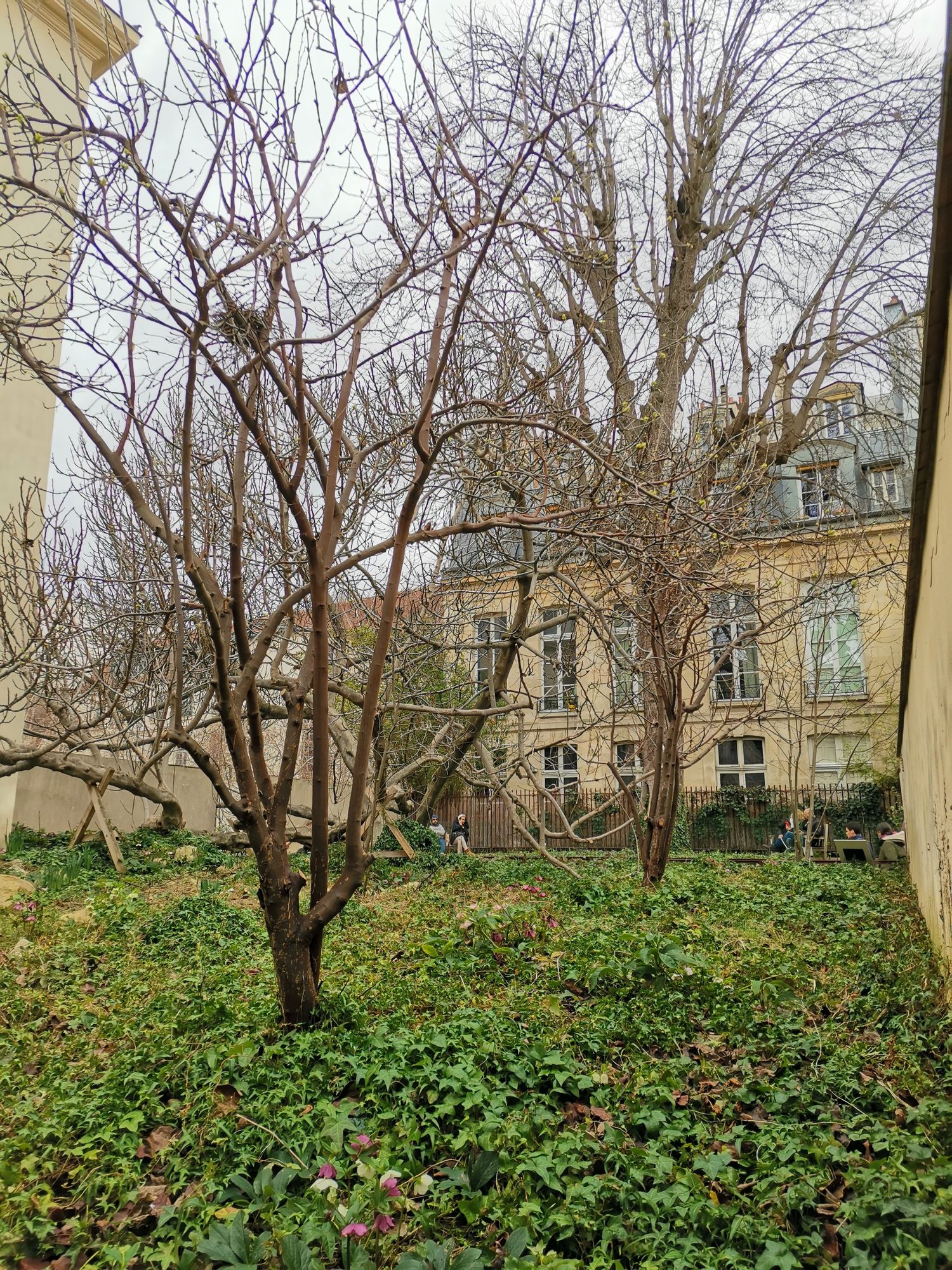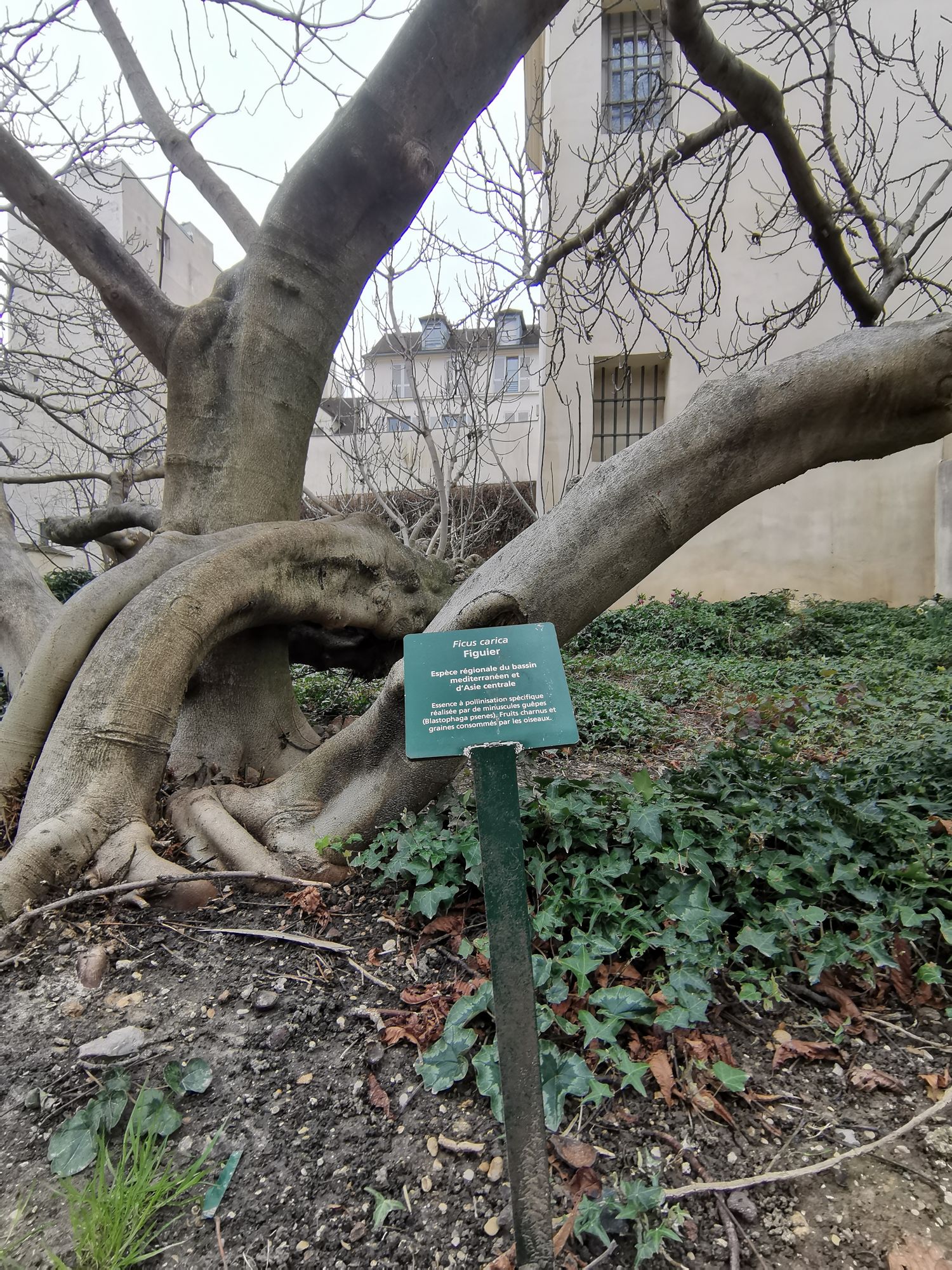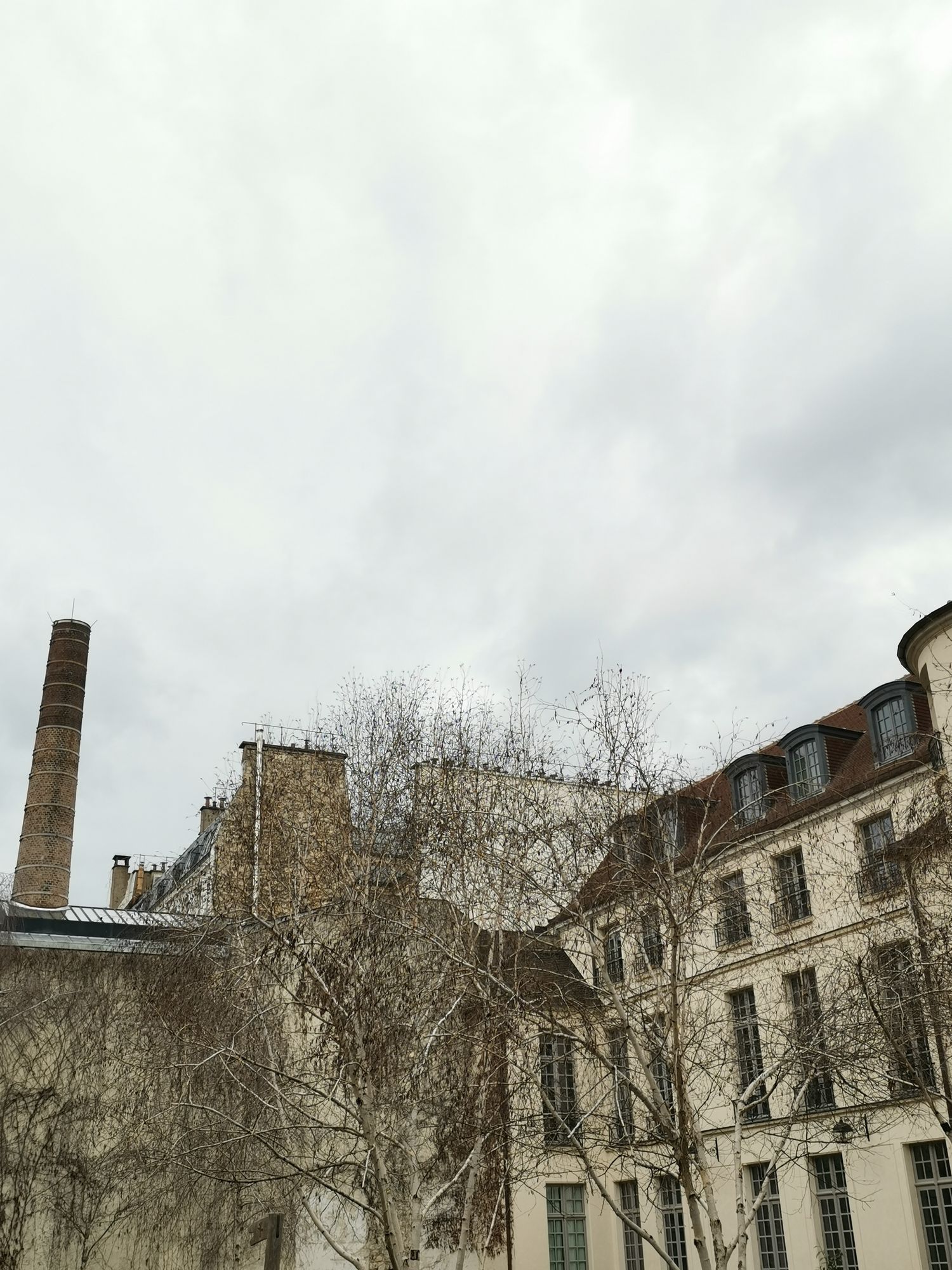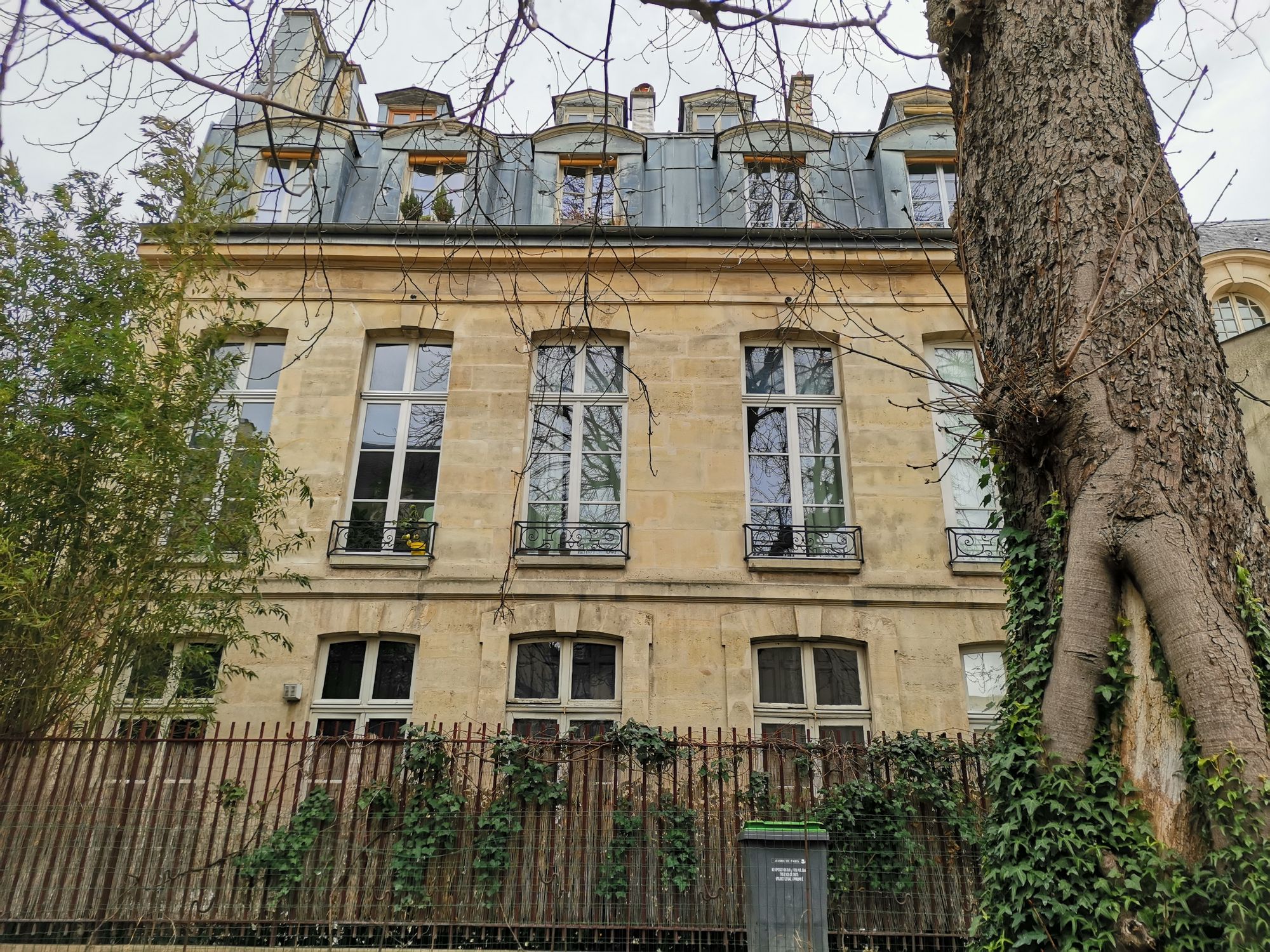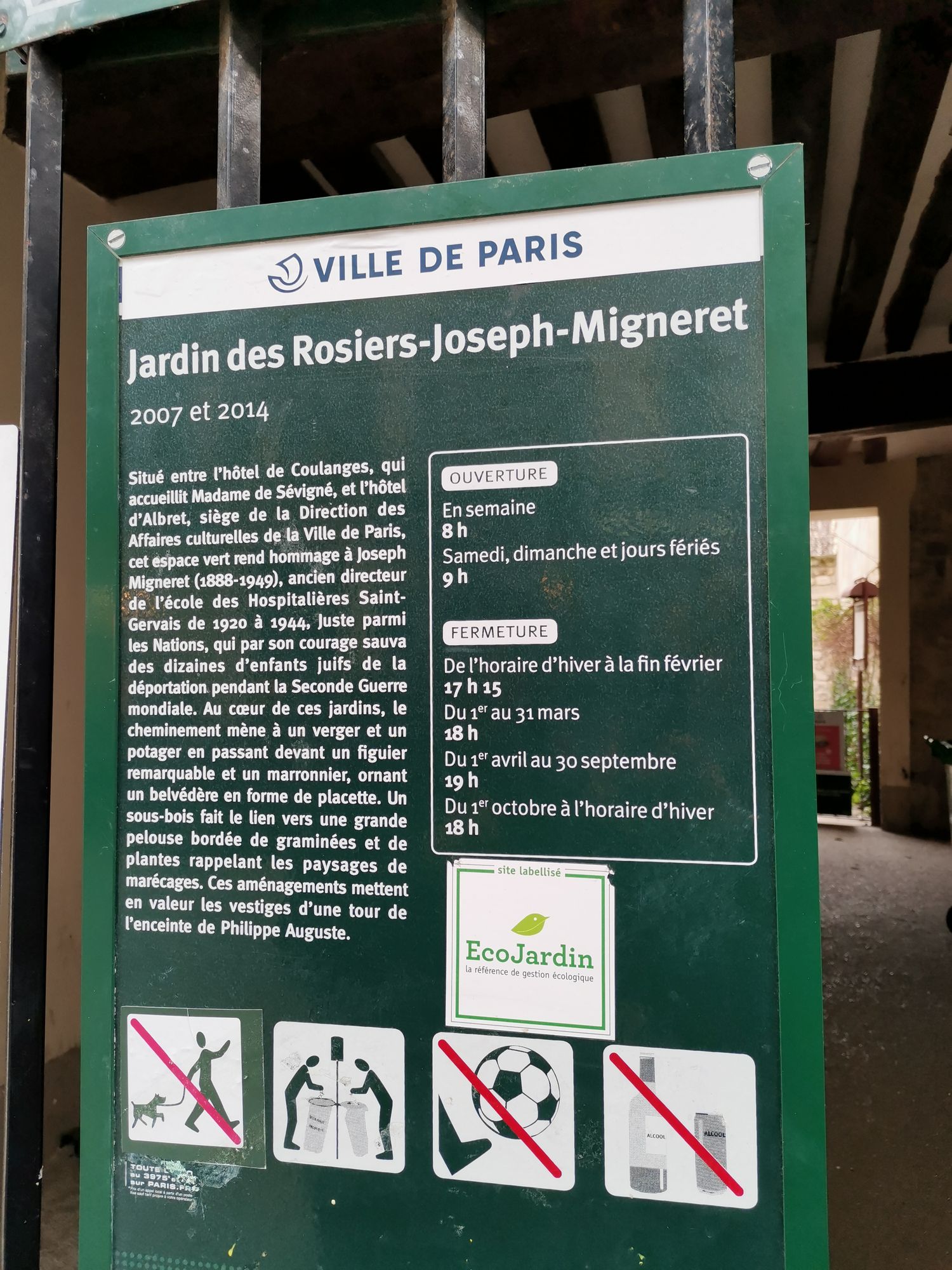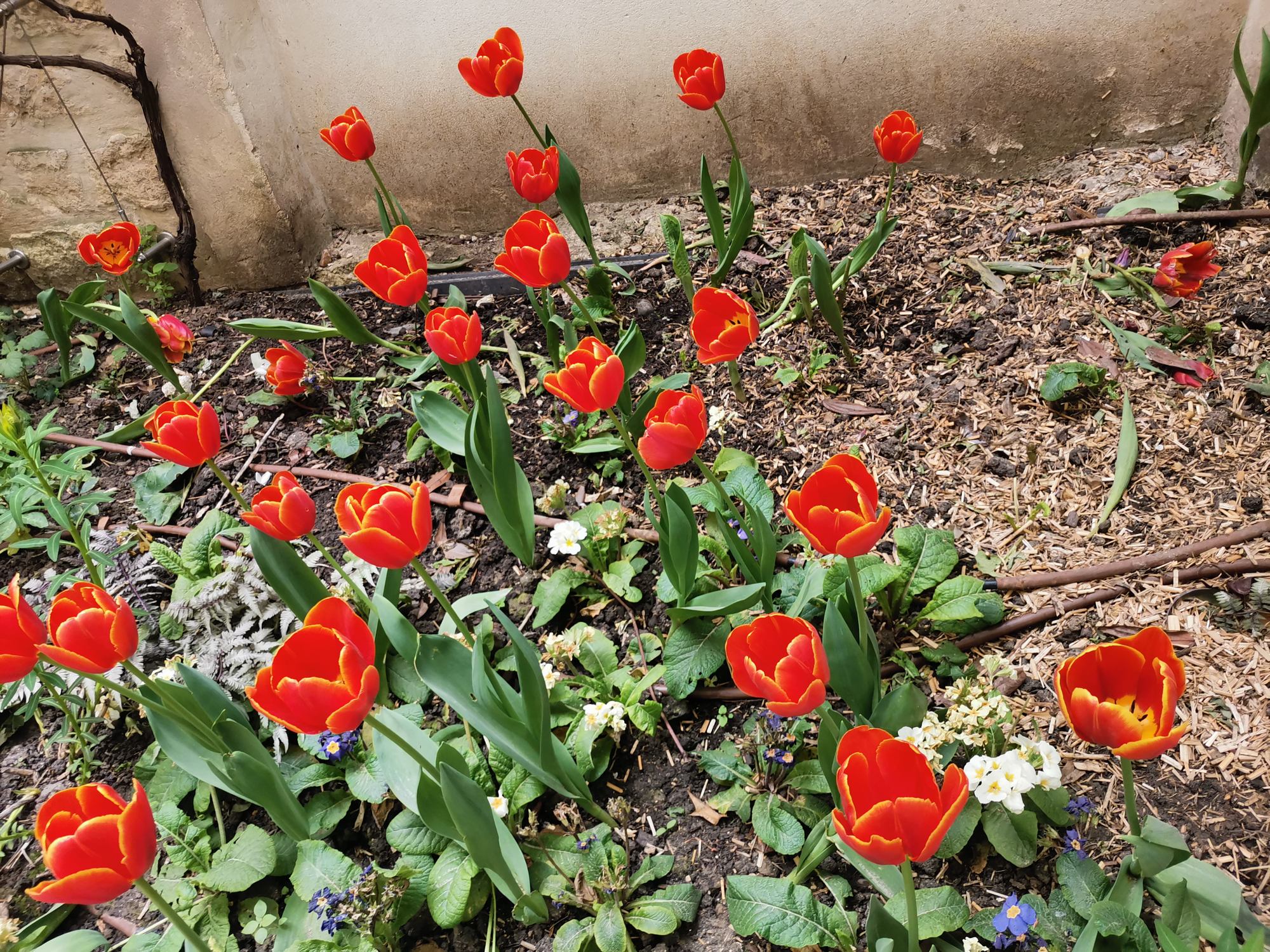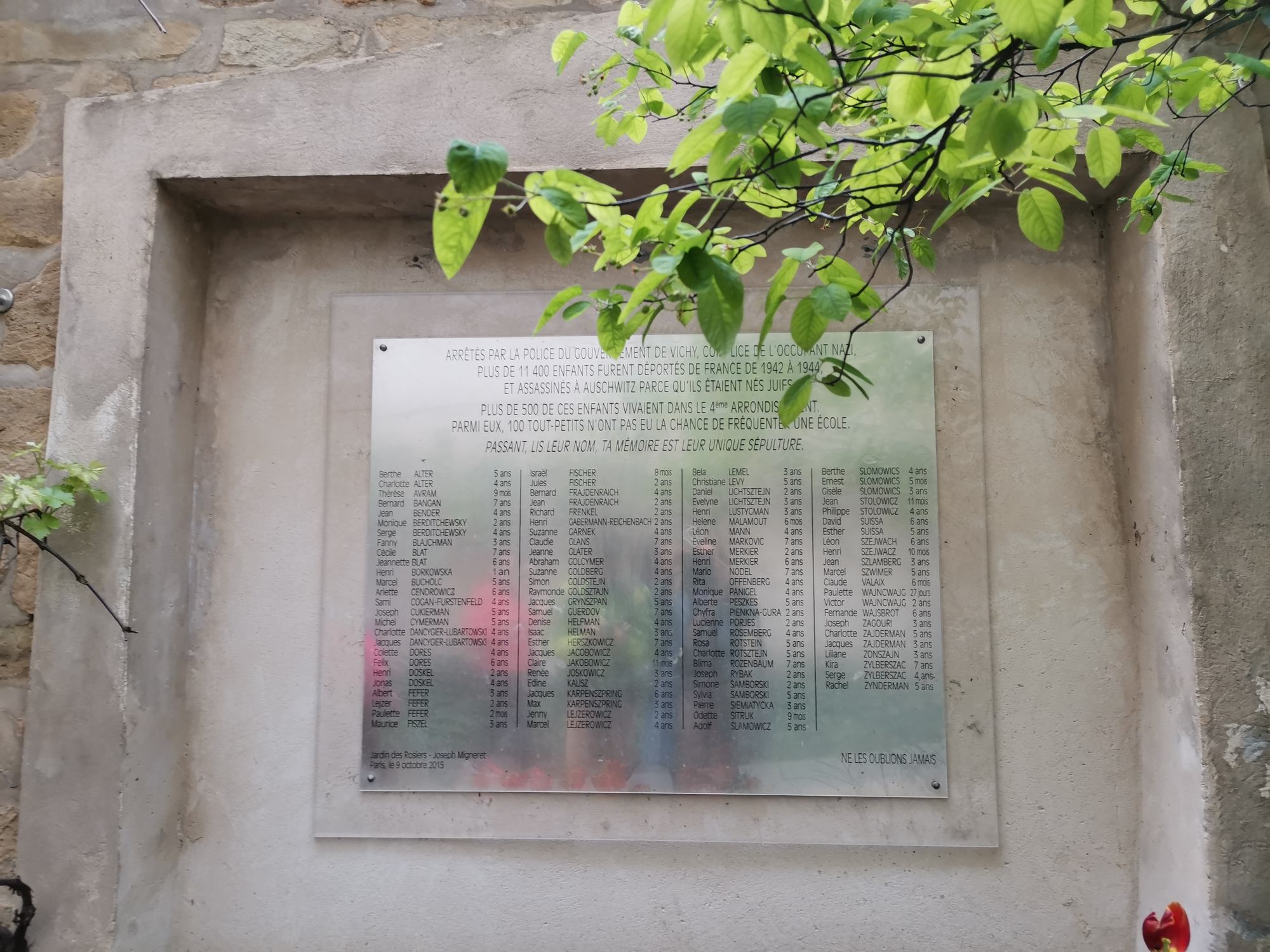Joseph-Migneret rose garden
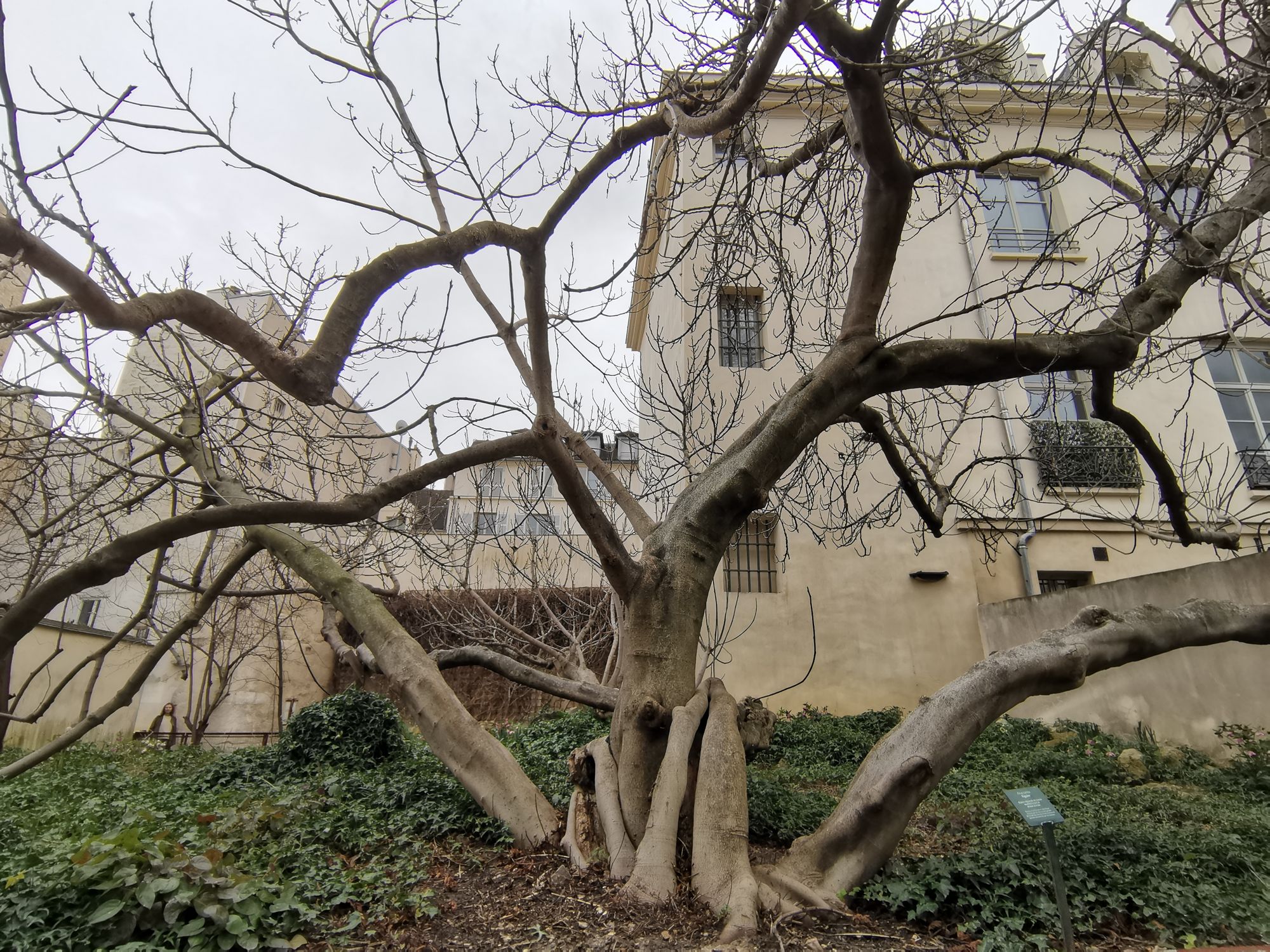
When did the Joseph-Migneret garden open and how has it evolved over time?
The public garden was created in 2007 by bringing together the private gardens of the mansions that border it. It was completed in 2014. At that time, it was named "Jardin des Rosiers - Joseph-Migneret" in honor of the principal of the neighboring school, Joseph-Migneret, for his acts of resistance during the Second World War. Before that, it was known as the “Francs-Bourgeois - Rosiers garden."
When you visit the Jardin Joseph-Migneret, you can enjoy a soothing green space while discovering the history and landscaping that make it a unique place in the heart of Paris.
Where is Jardin Joseph-Migneret in the Marais?
The garden is located between rue des Francs-Bourgeois and rue des Rosiers, in the Marais district of Paris. The main entrance is at 10, rue des Rosiers. Access is also possible via the courtyard of l'hôtel de Coulanges, located at 35-37, rue des Francs-Bourgeois.
How do I get to the garden by public transport?
The garden is served by line 1 of the Paris metro at the Saint-Paul station, making it easily accessible to visitors from all over the city.
Why is the garden named after Joseph-Migneret?
The Jardin Joseph-Migneret pays tribute to Joseph-Migneret (1888-1949), a man of exemplary courage. Joseph-Migneret was director of the Hospitalières Saint-Gervais school from 1920 to 1944. He is also recognized as a “Righteous Among the Nations” for having saved dozens of Jewish children from deportation during the Second World War.
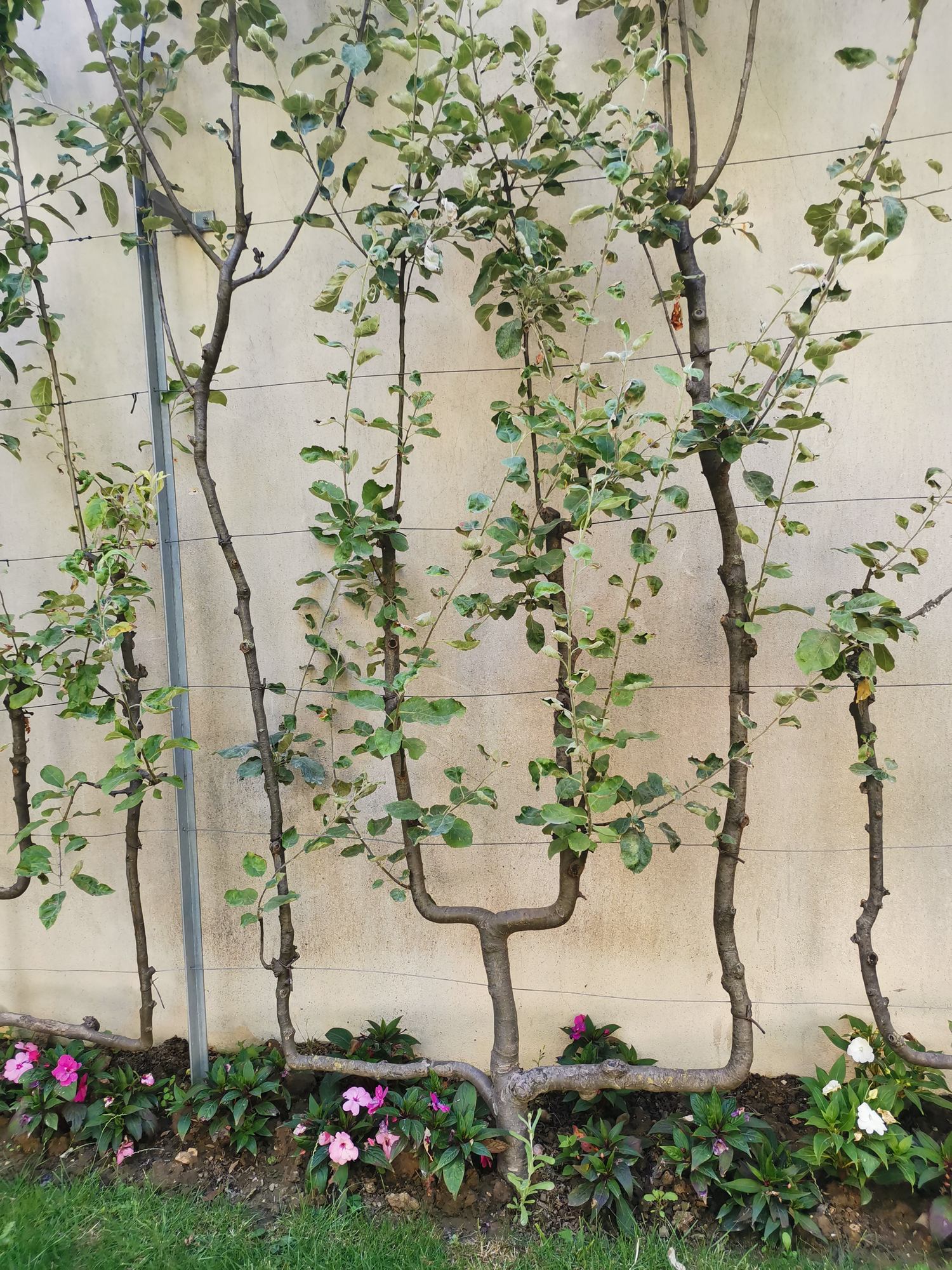
Can you describe the garden's layout?
At the heart of the garden, you'll find a pathway leading to an orchard and vegetable garden, with notable features such as a fig tree and a chestnut tree. In addition, the garden is adorned with a gazebo in the form of a small square, and an undergrowth connects this area to a large lawn bordered by grasses and plants reminiscent of marshland landscapes.
These features highlight the remains of one of the towers of the former enceinte de Philippe Auguste.
What is the total surface area of the garden?
The Joseph-Migneret garden covers an area of 2,135 m2. It was created by combining the three private gardens of the surrounding hôtels particuliers, Hôtel de Coulanges, Hôtel Barbes and Hôtel d'Albret. As a result, the garden is divided into several distinct sectors.
How to describe the different sectors of the garden?
The garden is divided into several sectors. The first sector, located behind the hôtel de Coulanges, consists of a large, semi-shaded rectangle of lawn, complete with children's playground equipment and surrounded by a curtain of Provence cane. It features a variety of plant species, including ceanothe, Mexican orange, white dogwood and many others.
From here, you have a view of the curious 35-metre-high chimney of the Société des Cendres, which, until 2002, processed shavings, filings and sweepings from the workshops to recover gold and silver. This industrial building is now leased to a Japanese ready-to-wear boutique, Uniqlo, which, despite the renovation work carried out on the former Société des Cendres factory, has preserved some reminders of the past, such as this chimney. The passageways have been preserved, as have the tools and furnaces in the basement.
The second area, behind the hôtel Barbes, is smaller and offers a dry path bordered by a creeping fig and chestnut tree, with a few places to stop.
The third area, behind l'hôtel d'Albret, features a garden shared by local residents, espalier plantings, and highlights one of the 77 towers of Philippe Auguste's enceinte, a listed historic monument. This tower, attached to the Hôtel d'Albret property, has had various uses over the centuries, from summer dining room to chapel.
Joseph Migneret garden in brief
Located between the Hôtel de Coulanges, home to Madame de Sévigné, and the Hôtel d'Albret, headquarters of the Paris Department of Cultural Affairs, this green space pays tribute to Joseph-Migneret (1888-1949), former principal of the Hospitalières Saint-Gervais school from 1920 to 1944.
[Righteous among the nations, his courage saved dozens of Jewish children from deportation during the Second World War.
At the heart of these gardens, the path leads to an orchard and vegetable garden, past a remarkable fig tree and a chestnut tree adorning a gazebo in the shape of a small square. An undergrowth connects to a large lawn bordered by grasses and plants reminiscent of swamp landscapes. These features highlight the remains of a tower from Philippe Auguste's enceinte.
Some photos of the Joseph-Migneret garden
Summary return of the gardens and squares of the Marais
